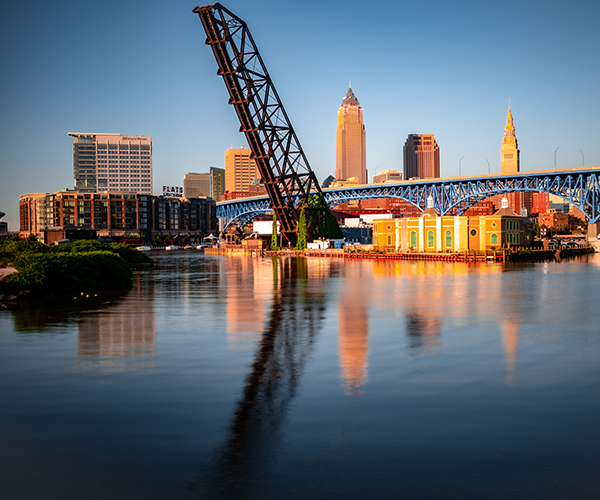Louder than Words
by Erick Trickey | Aug. 22, 2008 | 4:00 AM
On Sept. 5, SPACES Gallery will open an exhibition that includes his artwork, while a film he appears in begins a one-week run at the Cedar Lee Theatre.
SPACES’Bi-Lingual features the work of several artists of color, including Lovelace and his gritty, provocative urban scenes.One Bad Cat, a documentary, tells the life story of Lovelace’s mentor, the late East Cleveland outsider artist the Rev. Albert Wagner.
Lovelace had already spent years painting before he met Wagner in 1993. He’d studied at the Cleveland Institute of Art for a year and a half, legally changed his name from Michael to reflect his friends’ nickname for him, and was living at the Hodge School, an artists community in a former school building in Cleveland’s St. Clair-Superior neighborhood.
Still, Wagner’s friendship changed Lovelace’s art and life.
“When I met him, I was doing [paintings of] jazz and musicians,” Lovelace says. “I was trying to do art that I thought people wanted.” Wagner was doing the opposite. His house was filled with simple primary-color paintings of Old Testament figures, their faces evoking shame and hope, fear and faith.
“His home was like a school to me,” Lovelace says. “I loved going there just to wander around like a kid, just looking.”
“He had his message, he had his vision, and that’s how he changed my work,” says Lovelace. “Once I met him, I started looking at my environment.”
Lovelace was angry that alcoholism was tearing up his household and community. He was angry at himself for having sold drugs. So he began painting stark cityscapes full of victims of substance abuse, poverty and violence.
Last August, the Cleveland Clinic exhibited his paintingMy Hometown for about three hours, then took it down because viewers objected to its depiction of a segregated Cleveland, with blacks on one side of the canvas under the names of East Side neighborhoods, whites under West Side signs and a few figures mingling in the center. Lovelace says it’s a realistic expression of city pride: Cleveland has always been segregated, but blacks and whites meet in the middle. “Whether we work together, that’s in the middle; whether we go to school together, that’s in the middle; if you’re dating, that’s in the middle.”
“SPACES is challenging enough to allow you the freedom to talk about things that other people would not handle, because they think they wouldn’t be marketable,” he says.
Trending
-
1
-
2
-
3
-
4
-
5










